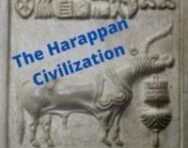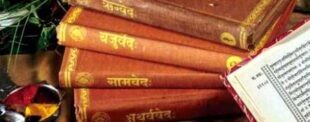
Pre Historic Period | Ancient History Short Notes
Pre-Historic Period notes/study material for preparation of UPSC, BPSC, UPPSC and other State PSC Examinations.

Rig Vedic Period notes/study material for preparation of UPSC, BPSC, UPPSC and other State PSC Examinations.
By now, we already know that the great Harappan civilization was followed by another great era in Indian history known as the Vedic age/culture/civilization.
The Vedic texts are the primary sources for the reconstruction of the Vedic culture. In the last article, we studied in detail about the Vedic Literature.
In this article we will study about the various aspects of vedic period like Social and political life, Religion, Economic condition etc.
But first, let’s see the timeline of vedic age. Having a broad overview of the timeline will always help you in linking the historical events to one another and make a better understanding of the chronology.
The period from 1500 BC to 600 BC is considered as Vedic Period which is divided into two parts :
During the Rig Vedic period the Aryans were mostly confined to the region called ‘Sapta Saindhava’ which included Afghanistan, Swat Valley of Punjab and some parts of the Indo-Gangetic plain. The political, social and cultural life of the Rig Vedic people can be traced from the hymns of the Rig Veda.
During Rig-Vedic era, the basic unit of political organization was Kula or family. The head of the family was a Kulapa.
Several families joined together on the basis of their kinship to form a village or grama which was controlled by a village headman Gramini.
A group of villages constituted a larger unit called visu(clan) which was headed by Vishayapati.
Many clans made a community called Jana which was the highest political unit.
The Chief of this tribe Jana was Rajana who was the protector of the tribe and the cattle wealth. He fought wars on behalf of his Jana. These wars were for control of cattle wealth.
The king was assisted by Purohita and Senani ( commander of the army ) in his administration. There was no special officer for justice however spies were employed to keep an eye on theft or burglary.
There were two important bodies called the Sabha and Samiti. Sabha seems to have been a council of elders and advised the king on administration. Samiti, a general assembly, included common people.
Vidatha which also appears frequently in Rig veda, was the earliest folk assembly of the Aryans, performing all kinds of functions – economic, military, religious and social.
There were several tribal kingdoms during the Rig Vedic period, such as Bharatas, Matsyas, Yadus and Purus. The concept of land territory was absent in the early Rig-Vedic period and The king did not maintain any regular or standing army.
The Rig Vedic society was patriarchal. The basic unit of society was family which was called Graham and the head of family was known as Grahapathi.
Monogamy was prevalent whereas polygamy was also practiced among the royal and noble families.
Women were provided with equal opportunities as men for their spiritual and intellectual development. We find mention of many women poets like Apala, Viswavara, Ghosa and Lopamudra during the Rig Vedic period. Women could even attend the popular assemblies. The practices of child marriage and sati were absent.
Gurukulas imparted education to the disciples after their sacred thread ceremony. Entire instruction was given orally.
Both men and women wore upper and lower garments made of cotton and wool. A variety of ornaments were used by both men and women.
Wheat and barley, milk and its products like curd and ghee, vegetables and fruits were the chief articles of food. Alcoholic as well as Non-alcoholic drinks were known and common. Soma and Sura(intoxicating) were the two popular liquors.
Chariot racing, horse racing, dicing, music and dance were the favourite pastimes.
The social divisions were not rigid during the Rig Vedic period as it was based on occupation
The Rig Vedic Aryans personified the natural forces like earth, fire, wind, rain and thunder as gods and worshipped them.
The hymns of the Rig-Veda were mainly sung for the glorification of these gods in order to appease them. Gods were regarded as the protector of men and giver of happiness.
The important Rig Vedic gods were:
Indra – Most important God and was also known as Purandara (the destroyer of forts) and God of rain.
Agni (Fire) – Second in importance. He was regarded as the intermediary between the Gods and the worshipper.
Varuna (Rain) – He was supposed to be the upholder of the natural order.
Vayu – Wind
Maruts – storm
There were also few female gods like Aditi and Ushas.
There were no temples and no idol worship during the early Vedic period.
Prayers were offered to the gods in the expectation of rewards(not meant for the spiritual uplift). Ghee, milk and grain were given as offerings and elaborate rituals were followed during the worship.
The Rig Vedic Aryans were primarily pastoral people and their main occupation was cattle rearing. Their wealth was estimated in terms of their cattle as cattle was synonymous with wealth.
The gifts to the priests were also in terms of number of Cows.
The economy was based upon agriculture. The people were aware of the sowing, harvesting, threshing and various agricultural seasons.
As they were aware about the use of iron, they used it to clean forests and brought more lands under cultivation.
Carpentry was an important profession. The availability of wood from the forests that were cleared made Carpentry a flourishing profession. Carpenters produced various kinds of chariots and ploughs.
Workers in metal made a variety of articles with copper (was known as ‘Ayas’), bronze and iron ( was known as Krishna Ayas). Spinning and pottery were another important occupation.
Goldsmiths were active in ornament making. Gold was known as ‘Hiranya’.
Trade was an important economic activity which was conducted through the barter system. In the later times, gold coins known as ‘Nishka’ were also used as a medium of exchange.
This completes our study of Rig Vedic Period.
Revision is the key to success in Civil Services exam. We understand this very well. Therefore we have included a list of MCQs with detailed explanation.
In the next chapter we will study salient features of Later Vedic period(Social and political life, Religion, Economic condition etc.).

Pre-Historic Period notes/study material for preparation of UPSC, BPSC, UPPSC and other State PSC Examinations.

Indus Valley Civilization notes/study material for preparation of UPSC, BPSC, UPPSC and other State PSC Examinations.

Vedic Literature notes/study material for preparation of UPSC, BPSC, UPPSC and other State PSC Examinations.

Later Vedic Period notes/study material for preparation of UPSC, BPSC, UPPSC and other State PSC Examinations.